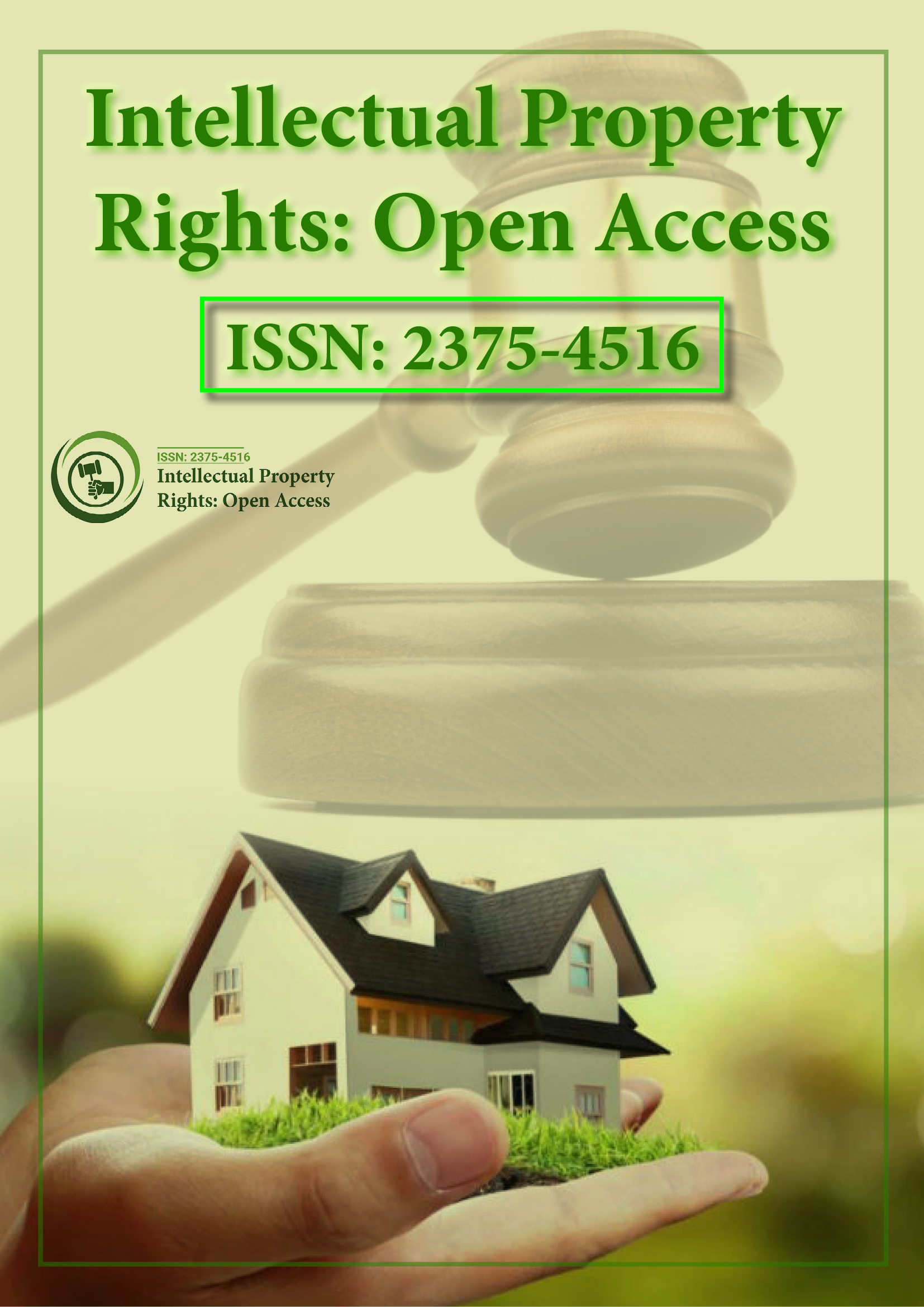Indexed In
- Open J Gate
- RefSeek
- Hamdard University
- EBSCO A-Z
- OCLC- WorldCat
- SWB online catalog
- Publons
Useful Links
Share This Page
Journal Flyer

Open Access Journals
- Agri and Aquaculture
- Biochemistry
- Bioinformatics & Systems Biology
- Business & Management
- Chemistry
- Clinical Sciences
- Engineering
- Food & Nutrition
- General Science
- Genetics & Molecular Biology
- Immunology & Microbiology
- Medical Sciences
- Neuroscience & Psychology
- Nursing & Health Care
- Pharmaceutical Sciences
Commentary - (2022) Volume 10, Issue 2
Concepts of Common Property Resource Management
John Sheen*Received: 25-Feb-2022, Manuscript No. IPR-2022-16070; Editor assigned: 01-Mar-2022, Pre QC No. IPR-2022-16070(PQ); Reviewed: 15-Mar-2022, QC No. IPR-2022-16070; Revised: 22-Mar-2022, Manuscript No. IPR-2022-16070(R); Published: 29-Mar-2022, DOI: 10.35248/2375-4516.22.10.202
About the Study
The good or service shared by a well-defined community is known as a common property resource. Consumers’ use of such resources is regulated by the community. However, due to challenges in monitoring, enforcement is limited. Water in a village pond, for example, is a common property resource that is solely used by the inhabitants. The village as a whole decides on the way and purpose for which the pond water can be utilized, which leads to a system of unwritten standards that have formed through time. However, due to insufficient monitoring, subjectivity in the rules, and uncertainties in property rights, the enforcement of penalties in the event of a breach of the norms is poorly implemented [1]. The common property system governing the management of natural resources is frequently misrepresented. It is usually seen as a condition in which no management regime exists; as a state of public access that is available to anyone. As a result, the degradation of common property resources in developing countries is wrongly ascribed to management, and common property systems, while it actually derives from the breakdown of local level institutional structures. For this reason, it’s critical to consider common property and its management systems as having a direct impact on the long- term sustainability of natural resources [2].
Expenses and profits are involved in common property resource management. The expenses have an impact on resource management. They differ depending on the dimensions of time, space, tangibility, and distribution. If the advantages of resource management accrue rapidly, locally, transparently, and individually or collectively, local institutions will be most successful in management. If the rewards are delayed, distant, difficult to recognize, and do not flow to the effort investors, the converse is true. The management of natural resources is also influenced by resource characteristics. The less renewable a resource is, the greater the risk of poor management having disastrous repercussions, and the stronger the case for government intervention. Seasonality is another important consideration in resource management. Water is abundant during the rainy season, necessitating fewer committees formed for water management. As a consequence, local institutions are less active and united in their management of the situation. Water is scarce during the dry seasons, local user organizations are unable to function efficiently, and central government involvement is virtually necessary. Similarly, fodders are plentiful in private lands during the rainy season, and forest resources require less management attention, but fodders are rare during the winter, resulting in effective management and distribution of fodder trees among communities [3].
The social and economic consequences of common property systems are numerous. First, it has ensured a consistent supply of natural resources, which are critical for rural people’s subsistence economies. Second, it has established a social control system to safeguard communal resources. Individual exploitation is curtailed, and local resources are safeguarded against exploitation by individual beneficiaries. It is not only fair, but it is also founded on a variety of factors, including family needs, social duty, respect, and welfare. Each household may fulfill its fundamental needs for timber, fodder, and fuel woods under this shared property structure without harming or degrading its resource bases. Overharvesting by fraudulent means, such as theft, is prevented by joint ownership, which offers checks and balances. It also gives individuals rewards and encourages them to conserve their forests [4].
The Farming and non-arming firms both benefit from common property arrangements in terms of profitability and sustainability. Poor management can have a negative impact on the rural economy and health infrastructure [5]. Policy ramifications of the common property structure are also present. Policymakers and planners should identify and recognize local management systems in order to manage resources effectively and fairly. Local resource management systems are efficient, long-lasting, and productive.
REFERENCES
- Alexander JA, Lee SY, Bazzoli GJ. Governance Forms in Health Systems and Health Networks. Health Care Manag. Rev. 2003; 3:228-242.
[CrossRef] [Google Scholar] [PubMed]
- Conrad D, Dowhg W. Vertical Integration in Health Services: Theory and Managerial Implications. Health Care Manag. Rev. 1990; 15:9-22.
[CrossRef] [Google Scholar] [PubMed]
- Gregg W, Moscovice I. The Evolution of Rural Health Networks: Implications for Health Care Managers. Health Care Manag. Rev. 2003; 2:161-177.
[CrossRef] [Google Scholar] [PubMed]
- Moscovice I, Christianson JB, Wellever A. Measuring and Evaluating the Performance of Vertically Integrated Rural Health Networks. J. Rural Health. 1995; 1:9-21.
[CrossRef] [Google Scholar] [PubMed]
- Robinson JC, Casalino LP. Vertical Integration and Organizational Networks in Health Care. Health Aff. 1996; 15:7-22.
[CrossRef] [Google Scholar] [PubMed]
Citation: Sheen J (2022) Concepts of Common Property Resource Management. Intel Prop Rights. 10:202.
Copyright: © 2022 Sheen J. This is an open-access article distributed under the terms of the Creative Commons Attribution License, which permits unrestricted use, distribution, and reproduction in any medium provided the original author and source are credited.
